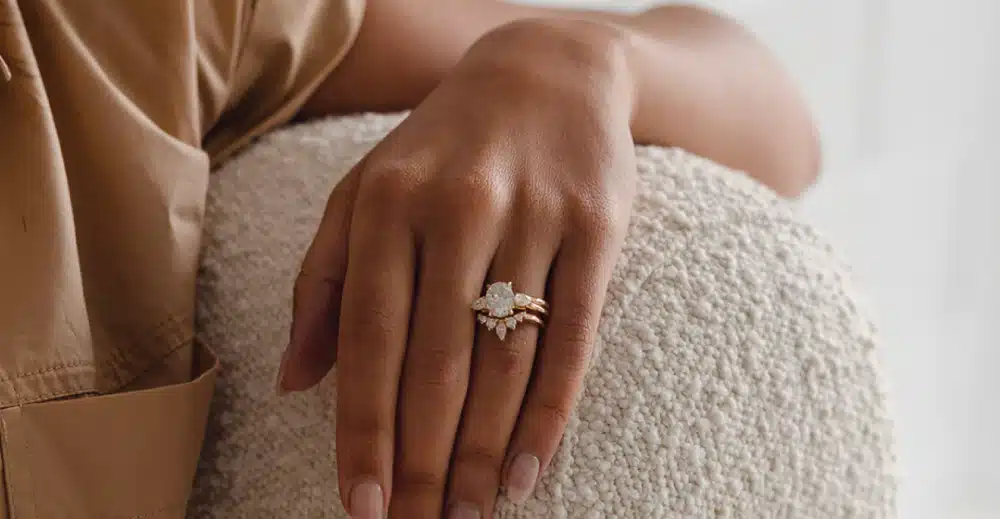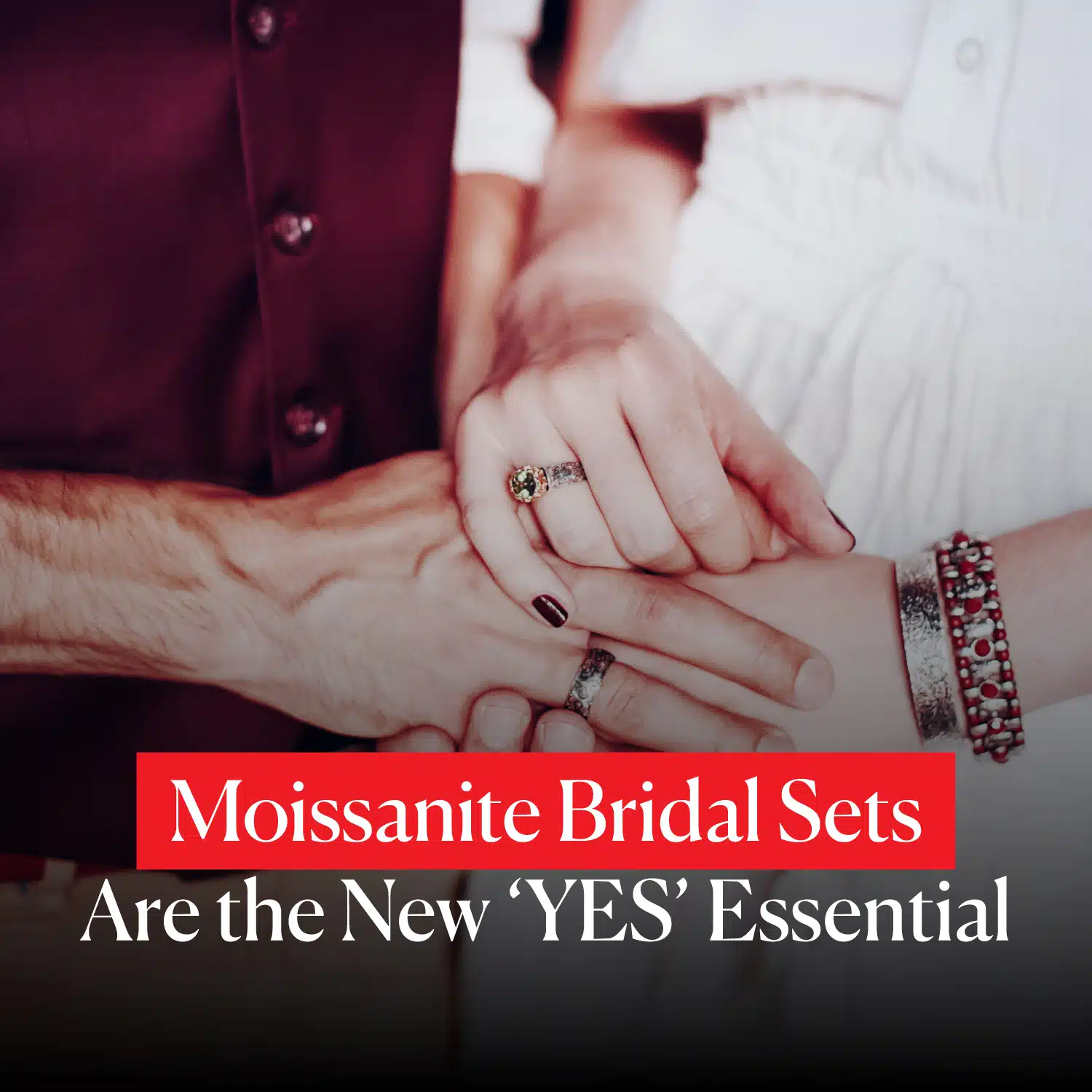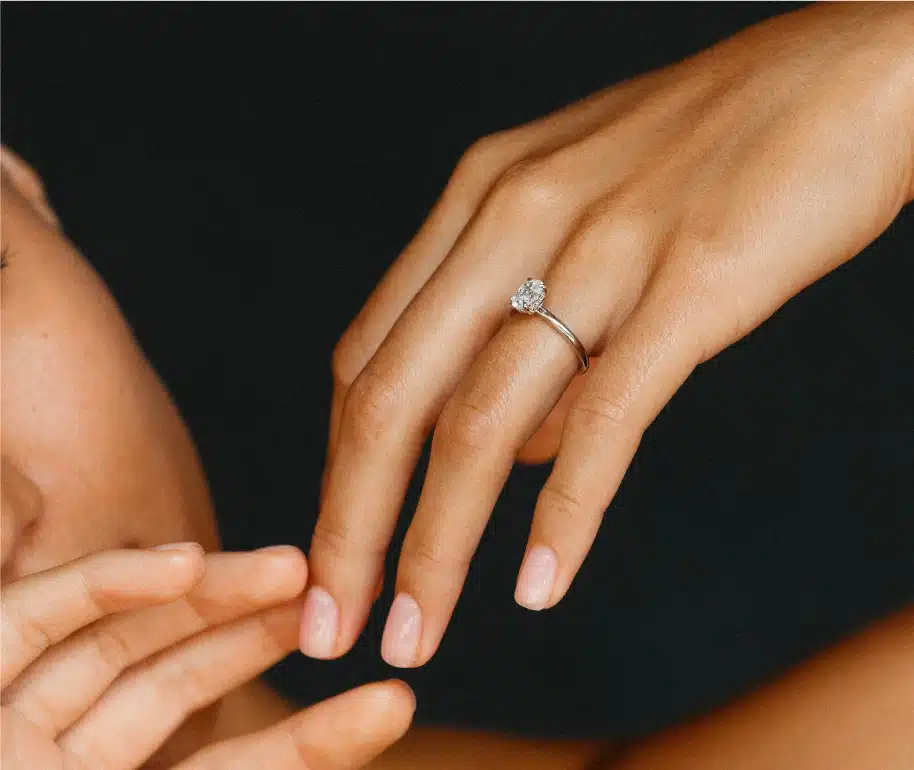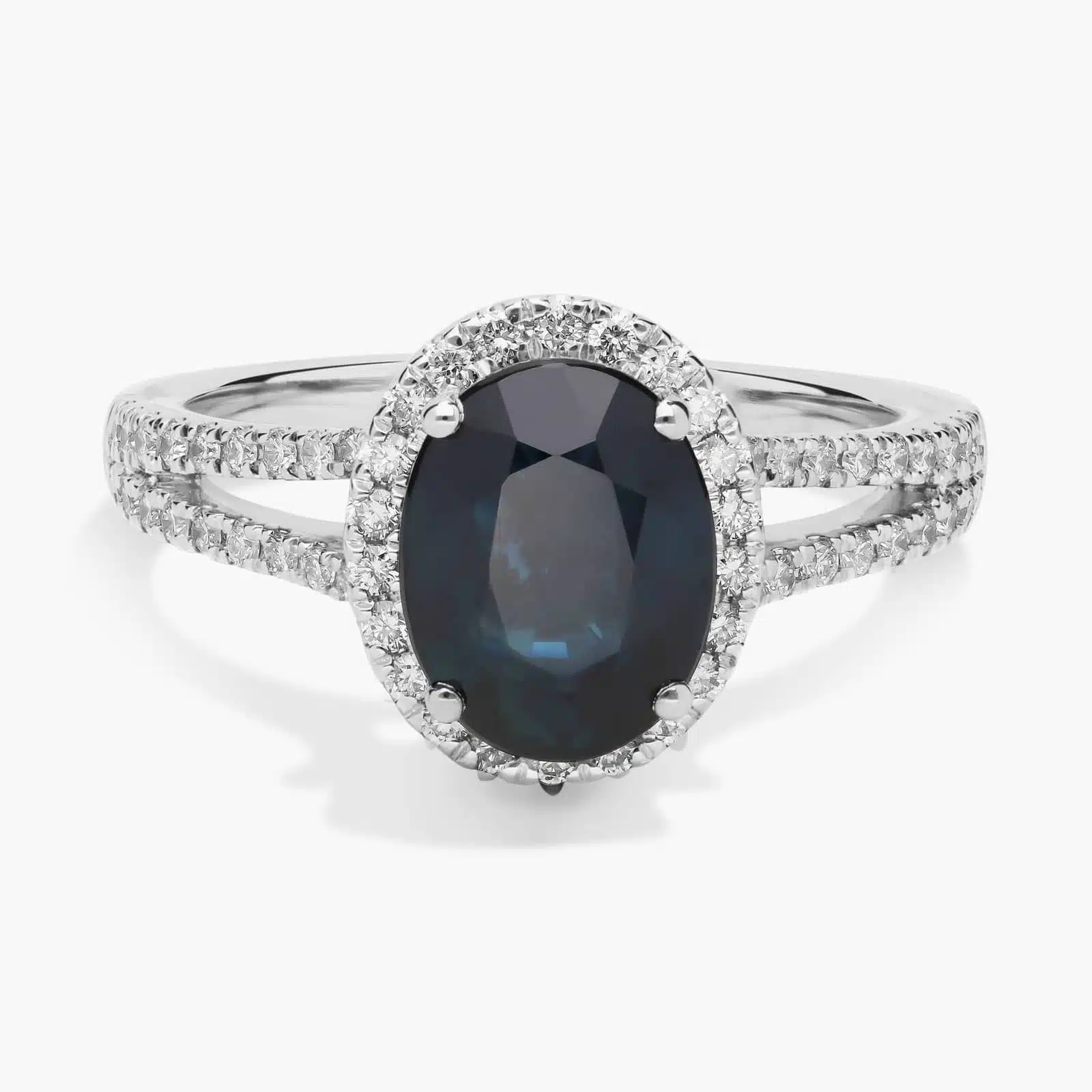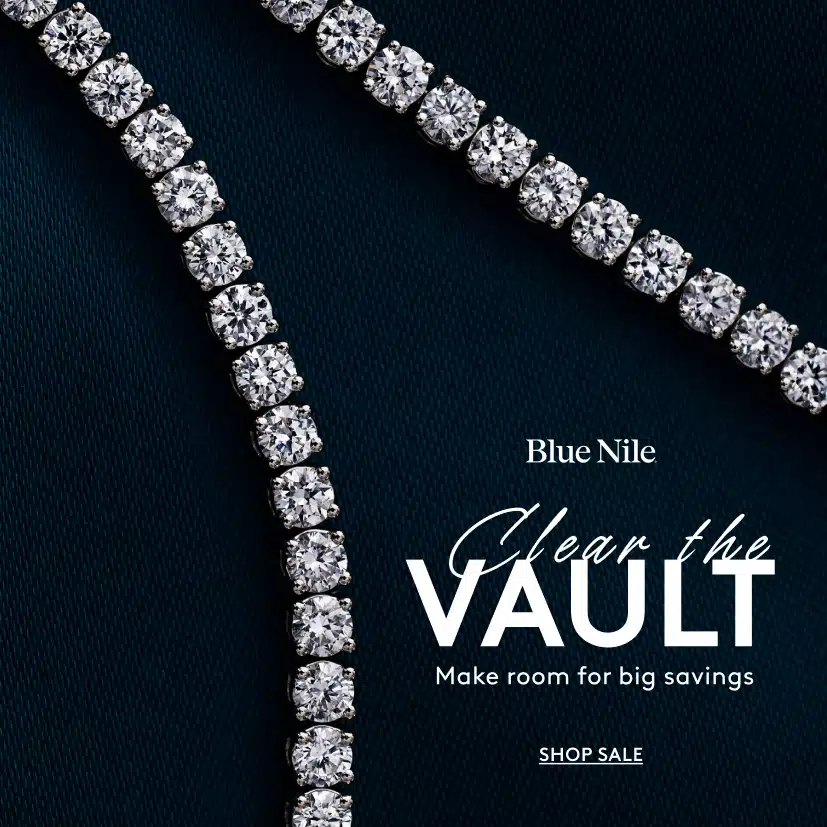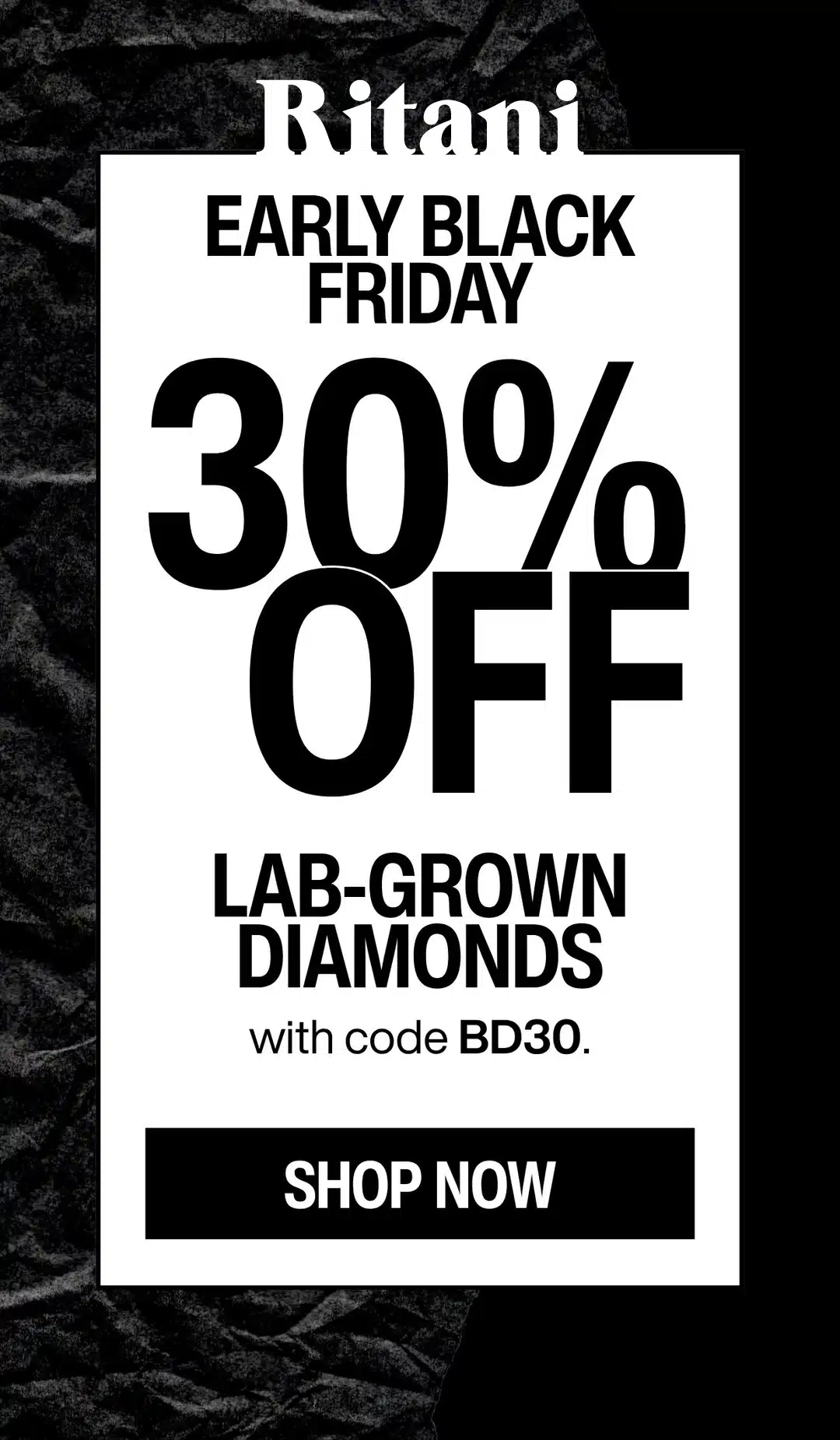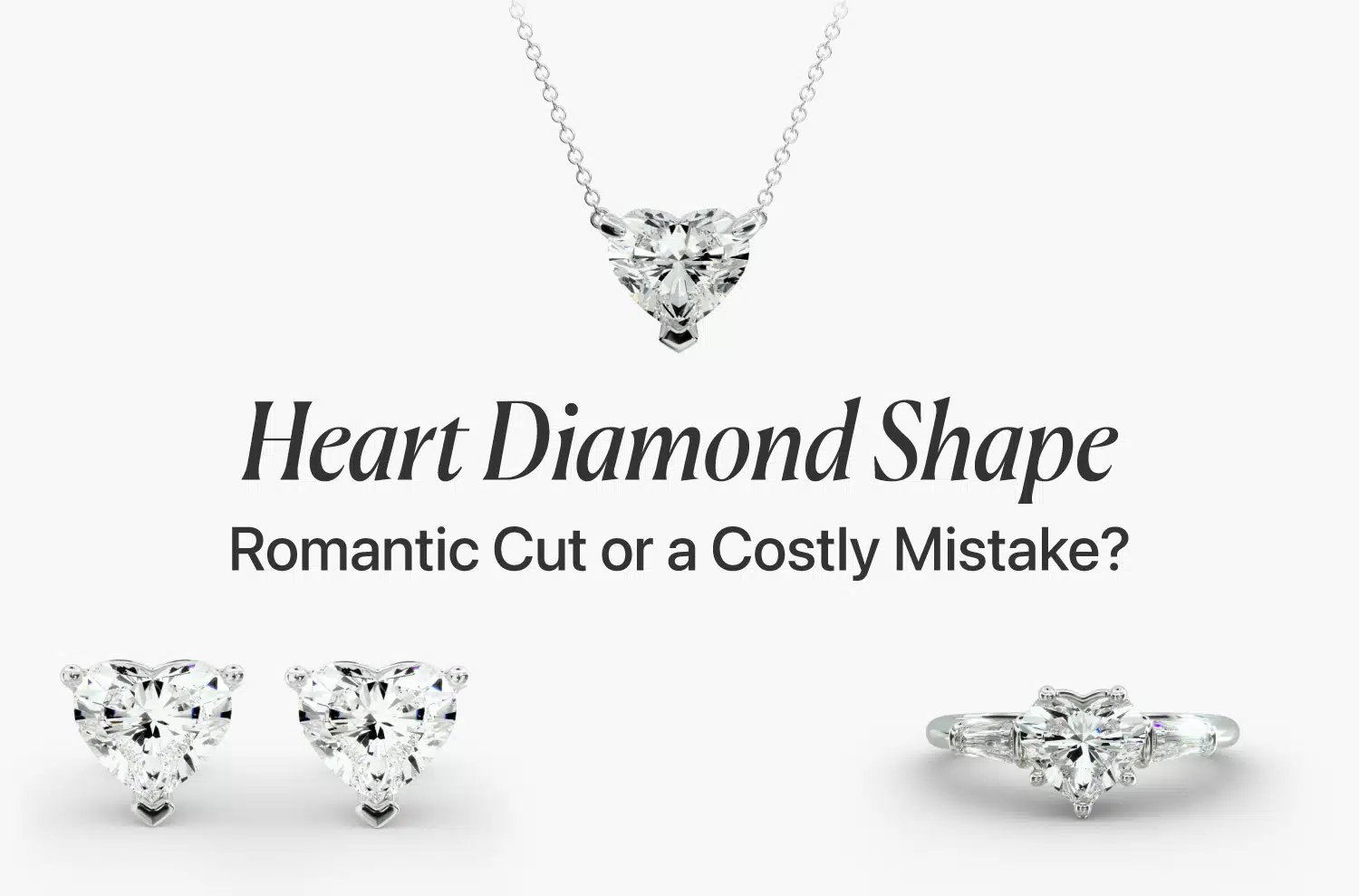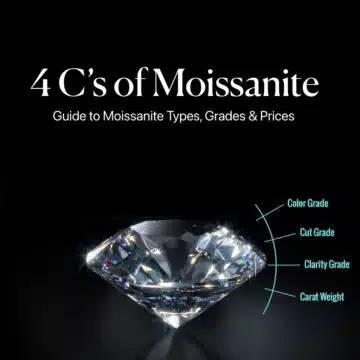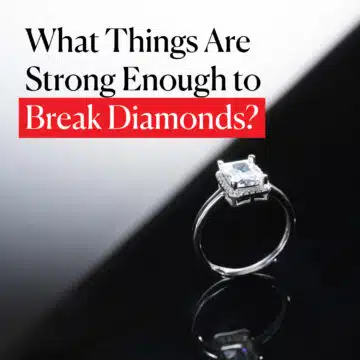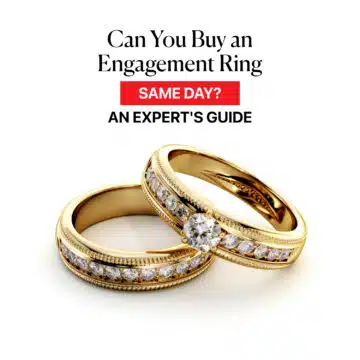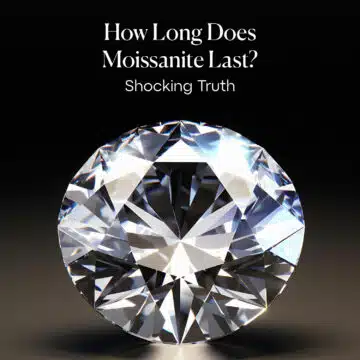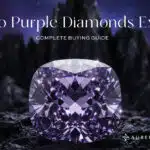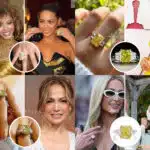The biggest mistakes to avoid when buying a heart diamond shape are choosing a stone with poor symmetry (uneven “lobes” or a weak “cleft”), a bad length-to-width ratio, and not selecting a carat weight large enough (ideally 1 carat+) to make its unique, romantic shape clearly visible.
You’ve been drawn to the ultimate symbol of love—the heart shaped diamond. But as you’ve looked, you’ve probably realized it’s one of the trickiest shapes to get right. Why do some look so perfectly romantic and others look misshapen? Is the point going to chip? Why is it so hard to find them in stores?
As your friend in the business, I’m here to demystify this beautiful and complex cut. We will break down the 7 most common traps buyers fall into, from choosing a poorly shaped stone to picking the wrong setting. By the end, you’ll have an expert’s eye and the confidence to find the perfect piece of heart shaped diamond jewelry.
- From a Royal Gift to a Modern Icon
- What Does a Heart Shaped Diamond Say About You?
- My Expert Guide to Choosing the Perfect Loose Heart Diamond
- Mistake #1: Ignoring Shape Appeal (The Most Important Factor!)
- Mistake #2: Going Too Small in Carat Weight
- Mistake #3: Leaving the Delicate Tip Unprotected
- Mistake #4: Overpaying for Clarity
- Mistake #5: Going Too Low on Color
- Mistake #6: Relying Solely on the Certificate
- Mistake #7: Buying It "Sight Unseen"
- Is a Heart Shaped Diamond More Expensive?
- A Visual Guide to Heart Shape Sizes
- The Best Settings for a Heart Shaped Engagement Ring
- Beyond the Ring: Other Heart Diamond Shape Jewelry
- The Showdown: Heart Shape vs. Other Shapes
- Your Heart Shape Diamond Questions, Answered
- The Verdict: A Shape for the True Romantic
Diamond IQ Test: Natural or Lab-Grown?
Two identical diamonds: GIA Certified, 1.51ct, D Color, VVS1, Ideal Cut. One is natural ($16,530), the other is lab-grown ($2,390). Choose the diamond you like better and see if you can match it to its origin.
From a Royal Gift to a Modern Icon
Before we get into the technical nitty-gritty of buying a heart shaped diamond, you need to understand its story. This isn’t a modern, trendy invention; it’s a cut with a love story that’s nearly five centuries long. The heart diamond shape is a true vintage classic, a “modified brilliant cut” with roots that go all the way back to the 16th century.
Its first truly famous appearance in history was in 1562, when Mary Queen of Scots sent a beautiful and symbolic heart diamond ring as a gift of friendship and goodwill to Queen Elizabeth I.
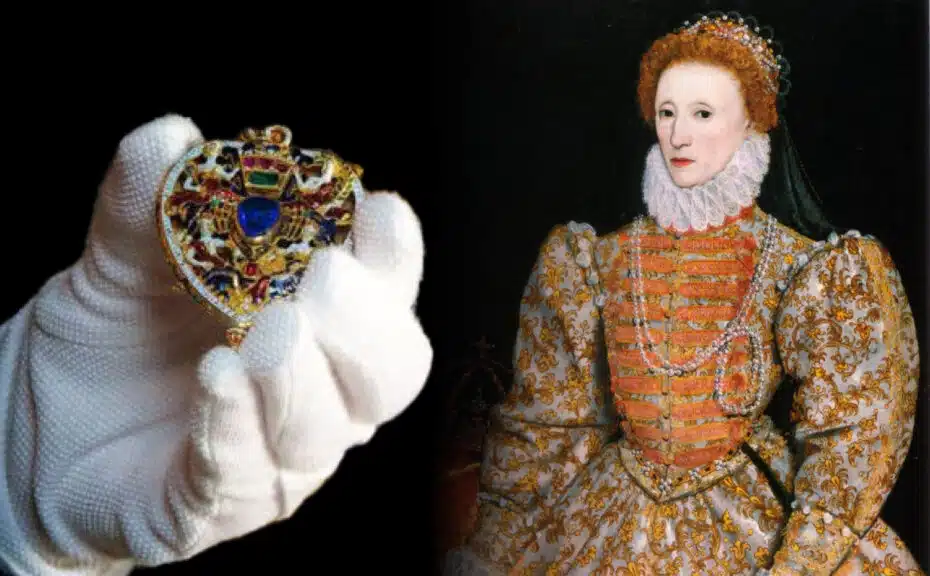
From that moment on, the heart shape was cemented as a symbol of royalty, romance, and powerful affection. When you choose a heart, you’re not just buying a diamond; you are tapping into a long and storied legacy.
Now, as much as I love this cut for its history and undeniable charm, my job is to be your honest friend and give you the full picture. The heart shape’s unique beauty comes with a unique set of challenges. Here’s my straightforward breakdown of what you absolutely must consider.
| The Pros of a Heart Shape | The Cons of a Heart Shape |
| The Ultimate Symbol of Love | GIA Does Not Assign a Cut Grade |
| Unique & Distinctive Look | Shape Symmetry is Hard to Get Right |
| Excellent Value (15-20% Less) | The Tip Can Be a Vulnerable Point |
| Brilliant Cut Offers Intense Sparkle | Shape is Less Visible in Small Sizes |
As you can see, the “pros” are all about emotion, romance, and value. The “cons” are all technical challenges that can trap an unprepared buyer.
A heart diamond is not a “buy it off the certificate” stone. It’s a shape that demands a careful, educated eye, which is exactly what I’m here to give you.
Best Deal Of The Year – Final Days
Blue Nile’s “Clear The Vault” is ON.
Shop Fine Jewelry Upto 70% OFF.
*Exclusions may apply. See Blue Nile for complete details.
What Does a Heart Shaped Diamond Say About You?
Choosing a heart shaped diamond engagement ring is, without a doubt, a statement. In a world dominated by the classic round brilliant, opting for the unabashed romance of a heart tells a story about your personality.
It is a choice for someone who is a true romantic, deeply sentimental, and confident enough to stand out from the crowd.
The person who chooses a heart is not afraid to be bold. They are passionate and wear their heart on their sleeve—or, in this case, on their finger. It’s a choice that prioritizes unique symbolism and personal meaning over traditional norms.
Every diamond shape has its own distinct personality, and if the confident, romantic spirit of the heart feels like a perfect match for yours, it is a truly wonderful and special choice. You can see how its unique character stacks up against its rivals in our complete Diamond Shapes Guide.
My Expert Guide to Choosing the Perfect Loose Heart Diamond
Welcome to the most important section of this guide. We’re about to move from theory to a practical, powerful blueprint. The heart diamond shape is a work of art, but like any masterpiece, its beauty lies in the details.
By understanding the seven most common traps buyers fall into, you will learn to see this diamond not just as a consumer, but with the critical and appreciative eye of an expert.
Mistake #1: Ignoring Shape Appeal (The Most Important Factor!)
This is, without a doubt, the most critical mistake you can make, and it happens all the time. A buyer gets so focused on the 4Cs on the certificate—the Color, the Clarity, the Carat weight—that they forget the most important “C” for a heart shape: its Character.
A D-color, Flawless heart shaped diamond is a complete waste of money if its shape is lopsided, stubby, or just plain unattractive. For this specific cut, the overall shape and symmetry are your absolute #1 priority.
Lifetime Protection Alert!
A James Allen purchase includes a free lifetime warranty. This covers free prong tightening, polishing, and cleaning for life, ensuring your jewelry always looks its best.
A beautiful heart shape is a masterclass in balance and graceful curves. It is not a simple shape to cut, and many are executed poorly. As your personal guide, I’m going to teach you the five key anatomical points I look at when judging a heart.
- The Cleft: This is the sharp, inward “V” at the top of the heart. A well-cut stone will have a distinct and sharp cleft. If it’s too shallow or almost non-existent, the stone can look more like a slightly lopsided pear.
- The Lobes: These are the two rounded “shoulders” that form the top of the heart. They must be perfectly symmetrical. One lobe should not be higher or flatter than the other. They should be full and rounded, without any flat spots.
- The Belly and Wings: These are the sides of the diamond as they curve down from the lobes. In a beautiful heart, the wings will have a gentle, graceful curve. If they are too straight, the diamond can look triangular. If they are too rounded or “fat,” the stone can look bulky.
- The Point: The bottom of the heart should taper to a distinct point. If the point is too rounded, it can make the entire diamond lose its iconic shape.

The second part of the shape puzzle is its overall silhouette. Is it a classic, “Valentine” heart, or a wider, chubbier one? This is determined by the Length-to-Width (L/W) Ratio. There’s no single “best,” but the classic, most sought-after look falls in a very specific range.
| L/W Ratio | Style Description | Mehedi’s Expert Take |
| < 0.90 | The “Wide” Heart | Overly chubby and can lose its elegant shape. Generally best to avoid. |
| 0.90 – 1.10 | The Sweet Spot | The ideal is a perfect 1.00, creating a balanced, classic heart. This entire range is excellent. |
| > 1.10 | The “Elongated” Heart | Can look overly stretched and narrow, losing the full, romantic feel of the lobes. |
The Mehedi Solution: You MUST visually inspect the diamond. Set your L/W ratio filter on the retailer’s website to a range of 0.95 to 1.05 to see the most classic shapes. Then, watch the 360° videos and become a hawk for symmetry.
Reject any stone with a shallow cleft or uneven lobes. Our full Diamond Shapes Guide provides an excellent overview of why silhouette is so crucial for fancy shapes.
Mistake #2: Going Too Small in Carat Weight
This is a very practical mistake, often driven by budget. A buyer loves the idea of a heart diamond shape and finds a beautiful 0.50-carat or 0.75-carat stone for a great price.
The trap is that the very thing that makes a heart special—its intricate, romantic shape—is the first thing to disappear at smaller sizes. The sharp cleft and the distinct point are small details.
Once the prongs of a setting are placed (especially the one that secures the cleft), a smaller heart can lose its definition and look more like a slightly misshapen round or a chubby pear from a distance. Many people who buy a half carat heart shaped diamond ring express this exact regret later.
The Mehedi Solution: Aim for 1 Carat or More.
As a general rule, I strongly advise my clients that a 1 carat heart shaped diamond should be the minimum starting point if they want the iconic shape to be clearly and beautifully visible after it has been set.
- At 1 carat, the lobes are full enough and the cleft is distinct enough to hold their own. A 1 carat heart shaped diamond ring is the perfect balance of visual impact and value.
- Of course, larger is even better. A 2 ct heart shaped diamond or a stunning 3 carat heart shaped diamond ring makes an incredible, unmistakable statement.
- If your budget doesn’t quite allow for a 1-carat diamond, consider a lab-grown option or use a halo setting to accentuate and define the shape of a slightly smaller stone.
Mistake #3: Leaving the Delicate Tip Unprotected
This is a mistake that can turn a moment of joy into one of heartbreak. The single, sharp point of the heart shaped diamond is, like the pear shape, its greatest structural vulnerability.
While a diamond is a 10 on the Mohs scale of hardness, it is not indestructible. A hard enough impact on that single point can cause it to chip.
The Mehedi Solution: Your Setting is Your Insurance Policy.
This is a problem with a simple and elegant solution: you MUST choose a setting that is specifically designed to protect that point. This is non-negotiable for any heart shaped diamond engagement ring.
Your Best Protective Setting Options:
- The V-Prong: This is the industry standard solution. A single metal prong is grooved into a “V” shape that securely cups the pointed tip, absorbing the force of any accidental impact.
- The Bezel: A bezel (or partial bezel) setting encircles the tip in a thin metal rim, offering the absolute maximum level of protection.
- The Halo: A halo of smaller diamonds creates a natural “bumper” that shields the entire perimeter of the diamond, including the point.
Choosing a setting with one of these features is the single most important step you can take to ensure your heart shaped wedding ring lasts a lifetime. The vulnerability of a pointed tip is a key concept in our guide on what things are strong enough to break diamonds.
Mistake #4: Overpaying for Clarity
This is a classic trap that can cost you thousands. A buyer, wanting a “perfect” symbol of love, believes they need to buy a diamond with a VVS or even an Internally Flawless (IF) clarity grade.
While a heart shape is less forgiving than a round brilliant, it is still a brilliant cut. Its 58 facets are designed to chop up light, and that natural sparkle is very effective at camouflaging small inclusions. Paying the massive premium for a flawless grade is often “financial overkill” that provides no visible benefit.

The Mehedi Solution: Hunt for an “Eye-Clean” SI1 Diamond.
Your goal is not to buy a flawless certificate; it’s to buy a diamond that looks flawless to your naked eye. This is where the SI1 clarity grade becomes the ultimate value sweet spot.
Your Heart Shape Clarity Guide:
| Clarity Grade | Mehedi’s Expert Take |
| SI2 / I1 | Very Risky. Inclusions are often visible. Best to avoid. |
| SI1 | The Value Hunter’s Zone. Many SI1 heart shapes are completely eye-clean. This is your best value. |
| VS2 | The Sweet Spot. Almost always eye-clean and a fantastic, safe choice at a good price. |
| VS1 / VVS+ | The Worry-Free (But Expensive) Zone. Flawless to the eye, but you are paying a huge premium for a feature you cannot see. |
To execute this, you must use the 360° video. Look for SI1 diamonds where the inclusions are small, white, and located near the girdle or the pointed tip, where the sparkle is heaviest. Our complete guide to the SI1 clarity diamond will turn you into an expert hunter.
Mistake #5: Going Too Low on Color
This is a subtle mistake, but a critical one for a heart shape. A buyer knows that G and H color diamonds are great value, so to save even more, they opt for a J or K color stone to be set in a white gold or platinum band.
The Harsh Reality: Color has a tendency to “pool” and become more concentrated and visible in the sharp corners and points of a fancy-shaped diamond. The pointed tip of a heart shape can act like a focal point for the stone’s natural body color, often making it appear a full grade warmer than it actually is.
The Mehedi Solution: Choose Your Color Based on Your Metal.
This is a non-negotiable rule. The color of the band will dramatically affect how you perceive the diamond’s color.
Your Heart Shape Color Guide:
| Metal Choice | Your “Sweet Spot” Color Grade |
| White Gold or Platinum | H Color or Better (G is the sweet spot) |
| Yellow or Rose Gold | I or J Color (K is possible) |
An H color will look bright and white against the cool tone of platinum. A J color in a yellow gold heart shaped diamond ring is a brilliant, savvy buy, as the warmth of the metal will perfectly mask the warmth in the stone. A D Color diamond is a luxury, but often an unnecessary one here.
Mistake #6: Relying Solely on the Certificate
This is a huge trap for a buyer who has done just enough research to be dangerous. They know they need a GIA report, but they don’t know what that report doesn’t tell them.
As we’ve discussed with other fancy shapes, the GIA certificate for a heart shaped diamond does NOT include an overall Cut grade. The report will have grades for Polish and Symmetry (which should be “Excellent” or “Very Good”), but no single grade that summarizes the stone’s light performance.
The Mehedi Solution: Use Expert Proportions as a Starting Point.
The numbers on the certificate are your filter to weed out the obvious duds, but they are not your final decision-maker.
Mehedi’s Expert Starting Point for Heart Proportions
- Table %: 54% to 64%
- Depth %: 56% to 66%
- Polish / Symmetry: Excellent or Very Good
These ranges will help you create a shortlist of high-potential diamonds. However, the final, crucial step is always a visual inspection. Even a stone with “perfect” numbers can have an unappealing shape or a weak sparkle.
Understanding the nuances of a grading report is crucial, and the importance of a trusted lab like GIA is a key topic in our article on IGI Diamond Certification—as it shows why we rely on the market leader for natural stones.
Read Our 5-Star Blue Nile Review
Check our comprehensive Blue Nile review to learn why we rated Blue Nile 5 stars for their exceptional quality and value.
Mistake #7: Buying It “Sight Unseen”
This final mistake ties all the others together. A buyer, feeling confident with a good GIA report, purchases a heart shaped diamond from a website with only a single, static photo or worse, a stock image.
The Harsh Reality: The heart shape diamond is arguably the riskiest, most complex diamond shape to buy “sight unseen.” The certificate will not tell you:
- If the stone has a severe bow-tie effect.
- If the lobes are lopsided or the cleft is shallow.
- If the overall shape appeal is graceful or wonky.
As my competitor Mike Fried from Diamonds.pro rightly notes, finding a beautifully cut heart shape is a rare find. You are taking a massive gamble if you can’t see the stone in motion.
The Mehedi Solution: High-Quality Video is Non-Negotiable.
You MUST buy your heart shaped diamond from a vendor who provides high-resolution, 360-degree videos of every single diamond in their inventory. This is your most powerful tool. It is your virtual jeweler’s loupe, and it is the only way to be a confident and protected buyer.
This is why I so consistently recommend online retailers like James Allen and Blue Nile. They built their businesses on this very technology. For an insider’s look at why their technology is so crucial, our article on things to know about James Allen before you buy is a must-read.
Alright, we’ve navigated the technical challenges of selecting a great stone. Now, let’s get to the part that truly excites every buyer: the price and the size. This is where the heart diamond shape shines as one of the most incredible value propositions in the entire world of fine jewelry.
Is a Heart Shaped Diamond More Expensive?
Let me answer this directly: No. A heart shaped diamond is not more expensive. In fact, it is a fantastic value. You can expect a high-quality heart shape to cost 15-20% less than a round brilliant diamond of the exact same carat weight, color, and clarity.
This significant discount comes down to a simple principle in diamond cutting called “yield from rough.” Think of a raw, unpolished diamond crystal. The cutter’s goal is to preserve as much of that precious material as possible. To create a perfectly round diamond, a huge amount of the crystal’s corners and weight must be ground away.
The heart shape, however, is a more efficient cut that can often conform better to the original shape of the rough crystal, meaning less of the diamond is wasted. That efficiency means a lower cost to produce, and that cost savings is passed directly on to you. I
t’s a clear win for the savvy buyer, especially in the current market where diamond prices are dropping, making this valuable cut even more accessible.
James Allen: Our 5-Star Choice for Price and Selection
Check our comprehensive James Allen Review to learn more about their pricing and commitment.
To give you a realistic idea of what your budget can get you, here is a sample pricing table for a high-quality, GIA-certified natural heart shape diamond using our “sweet spot” recommendations of H color and eye-clean VS2/SI1 clarity.
| Carat Weight | Typical Price Range | My Expert Take: What You’re Getting |
| 1.00 Carat | $3,300 – $4,500 | An iconic 1 carat heart shaped diamond ring for an exceptional price. |
| 2.00 Carat | $12,000 – $16,500 | A spectacular 2 ct heart shaped diamond for the price of a standard 1.5ct round. |
| 3.00 Carat | $27,000 – $40,000+ | The ultimate 3 carat heart shaped diamond ring; a true showstopper at a smart price. |
A perfect example of this value in action is a beautiful 1.01 Carat, G Color, SI1 Clarity heart shape from James Allen. When you look at its price and visual beauty, you can see how much more you’re getting compared to other shapes.
A Visual Guide to Heart Shape Sizes
Now that we know the price is fantastic, let’s talk about the visual size. This is where I need to give you some brutally honest “friend in the business” advice.
The way a heart cut diamond is faceted can sometimes make it appear slightly smaller “face-up” than a round brilliant of the exact same carat weight.
A portion of a heart diamond’s carat weight is distributed in its depth and its complex shoulders to create that iconic shape and brilliant sparkle. Think of it like an iceberg: some of the mass is below the surface, and that is precisely what creates its unique beauty. This is a small trade-off you make for choosing such a distinctive and technically complex shape.
Here is your guide to the typical face-up measurements (length x width) you can expect for a well-proportioned, square-ish heart shape. This will help you visualize the real-world size.
| Carat Weight | Average Size (in MM) |
| 0.75 ct. | 5.9mm x 5.9mm |
| 1.00 ct. | 6.5mm x 6.5mm |
| 1.50 ct. | 7.1mm x 7.1mm |
| 2.00 ct. | 8.0mm x 8.0mm |
| 3.00 ct. | 9.2mm x 9.2mm |
| 5.00 ct. | 10.5mm x 10.5mm |
When you’re ready to buy, having this chart on hand is essential. For an even more complete picture, you absolutely must have our Diamond Carat Size Chart open in another tab. It’s a powerful tool that compares all shapes side-by-side, giving you the ultimate visual guide.
A stunning example of a large heart shaped diamond ring is this 2.01 Carat, F Color, VS1 beauty from Blue Nile, where you can see the impressive 8mm+ dimensions come to life.
The Best Settings for a Heart Shaped Engagement Ring
You’ve done the hard work and found a beautiful, symmetrical, and brilliant heart shape diamond. Now for the incredibly exciting final step: choosing its perfect forever home. The setting is what gives your ring its personality and, crucially, its security.
For a heart cut engagement ring, the setting has two primary jobs:
- To enhance the unique, romantic silhouette of the heart.
- To protect its single, vulnerable pointed tip.
Let’s walk through the three most popular and effective heart shaped diamond ring settings that accomplish both of these jobs with style and grace.
The Solitaire Setting: Pure, Simple, and Timeless
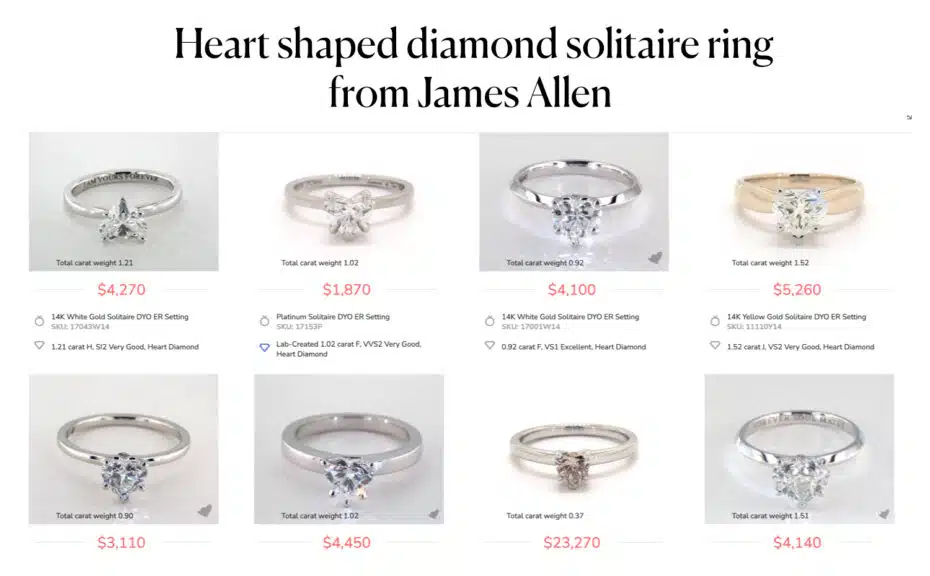
The heart shaped diamond solitaire ring is the quintessential choice for the purist, the person who believes the unique shape of the diamond should be the one and only star of the show.
A solitaire setting is the definition of classic elegance. It features a simple, unadorned band that lifts the diamond up to the light, putting all the focus on its brilliant facets and, most importantly, its iconic heart shape. It is a choice of pure, timeless confidence that will never go out of style.
- Timeless, classic style
- Maximizes light to the diamond
- Puts all focus on the heart shape
- Easy to clean and maintain
This is a phenomenal choice, but there is one non-negotiable rule you must follow: you absolutely must choose a solitaire with a 5-prong setting that includes a protective “V-prong” at the tip.
A standard 4-prong or 6-prong setting designed for a round diamond will not properly secure the heart shape. The V-prong is a special metal claw that perfectly cups the pointed tip, protecting it from any accidental knocks. For a modern, icy look, a setting in platinum or white gold is a perfect match.
For a flawless execution of this style, look no further than a classic 5-prong Comfort Fit Solitaire in Platinum from James Allen. It is the perfect marriage of timeless elegance and expert, protective engineering.
The Halo Setting: Maximum Sparkle & Romance
For the person who wants to amplify the romance and the “wow” factor of their ring, the heart shaped diamond ring with halo is the ultimate choice.
A halo setting features a “halo” of tiny pavé diamonds that perfectly traces the teardrop outline of your center stone. This creates a seamless, breathtaking display of brilliance and makes a bold, glamorous statement. It is an unabashedly romantic and incredibly brilliant look.
- Makes the center stone look larger
- Adds a huge amount of extra sparkle
- Perfectly outlines the heart shape
- Provides a protective “bumper”
A halo is a brilliant strategic move for a 1 carat heart shaped diamond, as it enhances the shape’s definition and makes it appear significantly larger, closer to a 1.50-carat stone.
This setting style works beautifully with all metal colors, but for a truly on-trend and romantic look, a heart shaped diamond engagement ring in rose gold—is an absolutely stunning choice.
The warm, pinkish hue of the rose gold beautifully complements the theme of love.
To see how magical this combination is, look at a stunning Pavé Halo Engagement Ring in 14k Rose Gold from Blue Nile. It is the epitome of modern romance.
The Three-Stone Setting: Symbolic & Substantial
The three-stone setting is a deeply meaningful and visually stunning choice, perfect for the person who loves symbolism and a ring with a substantial presence on the finger.
A three-stone ring represents your journey as a couple: your past, your present, and your future. For a heart diamond engagement ring, this style creates a powerful and architectural look, with a beautiful horizontal spread of brilliance across the finger.
- Rich with personal symbolism
- Creates a larger, horizontal look
- Allows for unique customization
- Adds significant extra carat weight
The choice of side stones is crucial here. For a heart shape, the most elegant pairings are often stones that provide a beautiful contrast in shape. A heart shaped diamond ring with trillions (triangle-shaped diamonds) creates a gorgeous, complementary look.
However, my personal favorite for a truly sophisticated, Art Deco feel is pairing the heart with two tapered baguette diamonds. The clean, straight lines of the baguettes provide a stunning architectural contrast to the heart’s brilliant curves.
A rich, classic metal like yellow gold makes this style feel especially warm and vintage.
You can see how breathtaking this looks in a Tapered Baguette Three-Stone Ring in 18k Yellow Gold from James Allen. It is a unique and truly unforgettable piece.
Beyond the Ring: Other Heart Diamond Shape Jewelry
While a heart shaped diamond engagement ring is the ultimate romantic statement, the beauty of this unique cut is not limited to just one piece. The heart diamond shape is incredibly versatile and makes for stunning necklaces, pendants, and earrings.
As your friend in the business, I want to show you how to choose the perfect piece, whether it’s a gift for a loved one or a beautiful treat for yourself.
The Heart Diamond Necklace: The Ultimate Symbol
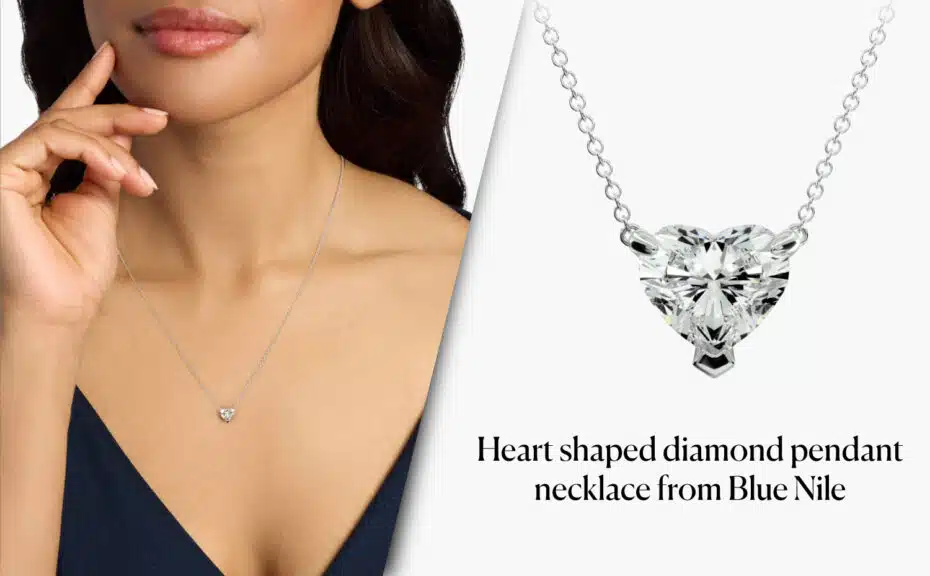
A heart shaped diamond pendant necklace is arguably the most timeless and universal symbol of love in the entire world of jewelry. It is a classic and deeply meaningful gift for any occasion, from an anniversary to a birthday or Valentine’s Day.
The most classic and popular style is the solitaire.
- The Look: A single, beautifully cut heart cut diamond pendant is suspended from a simple chain. All of the focus is on the diamond itself, allowing its unique shape and brilliant sparkle to take center stage.
- The Sweet Spot: A 1 carat heart shaped diamond necklace is a fantastic and very popular size. At 6.5mm, it is substantial enough to be immediately recognizable and impressive, without being overwhelming for daily wear.
- My Expert Advice: When choosing a solitaire pendant, the bail (the little loop that connects the pendant to the chain) is crucial. A simple “rabbit ear” or V-shaped bail will perfectly complement the heart shape and allow it to lie flat and gracefully against the chest.
\A Perfect Example: For a look at how stunning this classic style can be, a 1-Carat Solitaire Heart Diamond Pendant in White Gold from James Allen is the perfect benchmark.
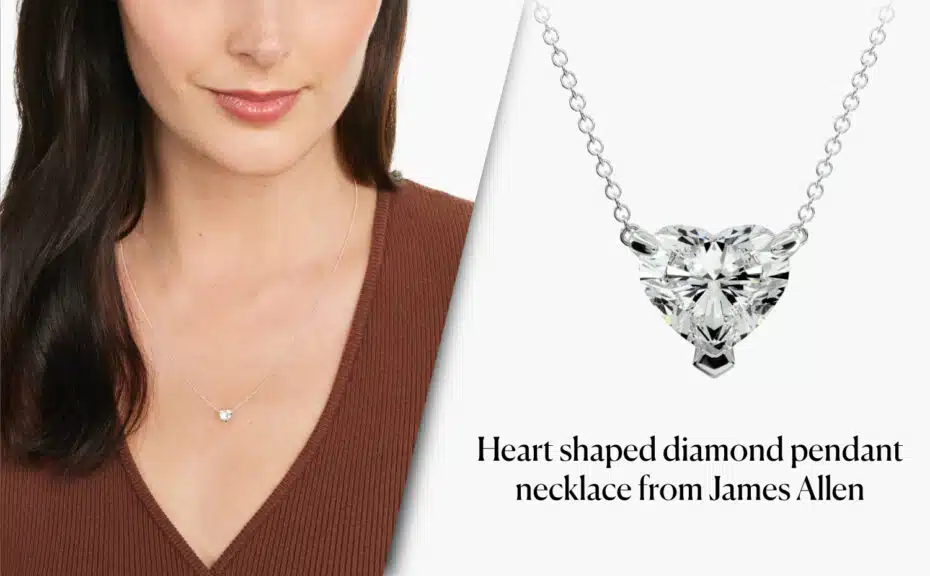
For those who want an even more dazzling and impactful look, the halo style is a perfect choice.
- The Look: Surrounding the center heart with a halo of tiny, brilliant-cut diamonds creates a stunning, glittering frame.
- The Advantages:
- Adds a huge amount of extra sparkle.
- Makes the center heart appear significantly larger.
- Perfectly accentuates the romantic silhouette.
My Expert Advice: This style can transform a pendant diamond heart necklace into a true showstopper. For a cohesive look, you can also pair it with a delicate diamond heart chain to add an extra layer of brilliance all the way around.
Heart Diamond Earrings: A Perfect Pair
A pair of heart diamond earrings is a breathtaking and incredibly romantic gift. However, creating a perfect pair is one of the truest tests of a jeweler’s skill.
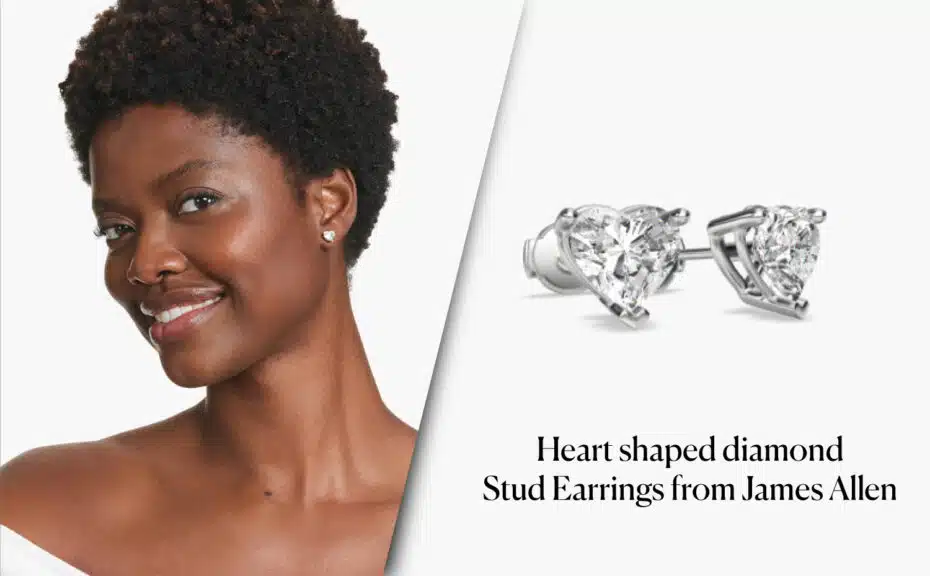
The primary challenge in creating heart shaped diamond earrings studs is finding two stones that are a perfect “match.” This is far more complex than matching two round diamonds. A jeweler must find two stones that match not just in the 4Cs, but also in their exact shape appeal:
- They must have the same Length-to-Width Ratio.
- They must have the same shoulder symmetry.
- They must have the same cleft definition.
Finding this perfect, mirror-image pair is what makes a set of heart cut diamond stud earrings so special and valuable.
- Carat Weight is Key: Just like with rings, the heart shape is most beautiful and recognizable at a larger size. If your budget allows, a pair of 1 carat heart shaped diamond earrings (meaning a 2-carat total weight) is an absolutely stunning and unmistakable statement of luxury and romance.
- Always Trust Your Eyes: You must inspect the 360° videos of both stones to ensure they are a good visual match. A reputable vendor like James Allen will always allow you to do this.
A Perfect Example: To see what a beautifully matched pair looks like, look no further than a pair of 1.8-Carat Total Weight Heart Shape Stud Earrings from James Allen.
You can see the attention to detail in their perfectly symmetrical shapes. This style also comes in a stunning sterling silver heart diamond ring design for a more accessible but equally romantic look.
The Showdown: Heart Shape vs. Other Shapes
You’re in love with the heart shape, but it’s always a smart move to see how your top choice stacks up against the other major contenders.
Let’s put the heart diamond shape in a head-to-head battle with the two cuts it’s most often compared to: the timeless Round Brilliant and the romantic Cushion Cut.
This clear, scannable table will help you see the key differences at a glance.
| Feature | Heart Shape | Round Brilliant | Cushion Cut |
| Vibe | Unabashedly Romantic | Classic & Timeless | Soft & Vintage |
| Sparkle Style | Excellent Brilliance | The Most Brilliant | Brilliant & Fiery |
| Value (Price/Carat) | Very Good | The Most Expensive | Excellent |
| Clarity Needs | Medium (Eye-Clean SI1+) | Medium (Eye-Clean SI1+) | Medium (Eye-Clean SI1+) |
My Mehedi’s Take: The choice here is all about the story you want to tell.
- The Round Brilliant Cut Diamond is the undefeated champion of pure sparkle and classic tradition.
- The Cushion Cut Diamond is its softer, more romantic cousin with a deep, vintage soul.
The Heart Shape is the specialist. It’s for the person who wants their ring to be the ultimate, undeniable symbol of their love. It offers the same brilliant sparkle and excellent value as the cushion, but in a far more distinctive and deeply personal silhouette.
Your Heart Shape Diamond Questions, Answered
You’ve got the expert blueprint for avoiding the common mistakes. Now, let’s dive into every specific question that comes up during the search. I’m going to give you my direct, honest, and in-depth answers to everything you need to know.
The Verdict: A Shape for the True Romantic
The heart shaped diamond is the ultimate emblem of love, but it’s a connoisseur’s cut that demands a careful eye. Its beauty is a direct result of the cutter’s skill, an artistry that you can’t read on a certificate but must see for yourself.
By avoiding these 7 common mistakes, you have moved from a regular customer to an informed expert. You now have the knowledge to judge its symmetry, protect its delicate form, and find a stone that is a perfect and lasting symbol of your love. Choose it with your heart, but buy it with your head.
Continue Your Research Journey
You are now a true expert on the most romantic diamond shape in the world. If you’re ready to take the next step and dive deeper into the world of fancy shapes, prestigious certifications, and the practicalities of buying online, these hand-picked guides are the perfect next step.
Advanced Diamond Knowledge
- A Deep Dive on Certification: Is IGI Diamond Certification as Good as GIA? – (https://moissanitebyaurelia.com/igi-diamond-certification/)
- Another Iconic Shape: An Expert Guide to the Asscher Cut Diamond – (https://moissanitebyaurelia.com/asscher-cut-diamond/)
- The Insider’s Guide to the Pear Shaped Diamond Ring – https://moissanitebyaurelia.com/pear-shaped-diamond-ring/
- A Look at Super-Ideal Cuts: Hearts and Arrows Diamonds: What GIA Reports Don’t Tell You – (https://moissanitebyaurelia.com/hearts-and-arrows-diamonds/)
Practical Guides & Strategies
- Get a Price Check: The Aurelia Diamond Rate Calculator – (https://moissanitebyaurelia.com/diamond-rate-calculator/)
- Putting it All Together: A Step-by-Step Guide to the Blue Nile Creative Studio – (https://moissanitebyaurelia.com/blue-nile-creative-studio/)
- After the Purchase: The Definition of an Appraisal for a Diamond Ring – (https://moissanitebyaurelia.com/definition-of-appraisal-for-diamond-ring/)
- Understanding Long-Term Value: A Guide to Selling a Diamond Ring at a Pawn Shop – (https://moissanitebyaurelia.com/selling-diamond-rings-at-a-pawn-shop/)

